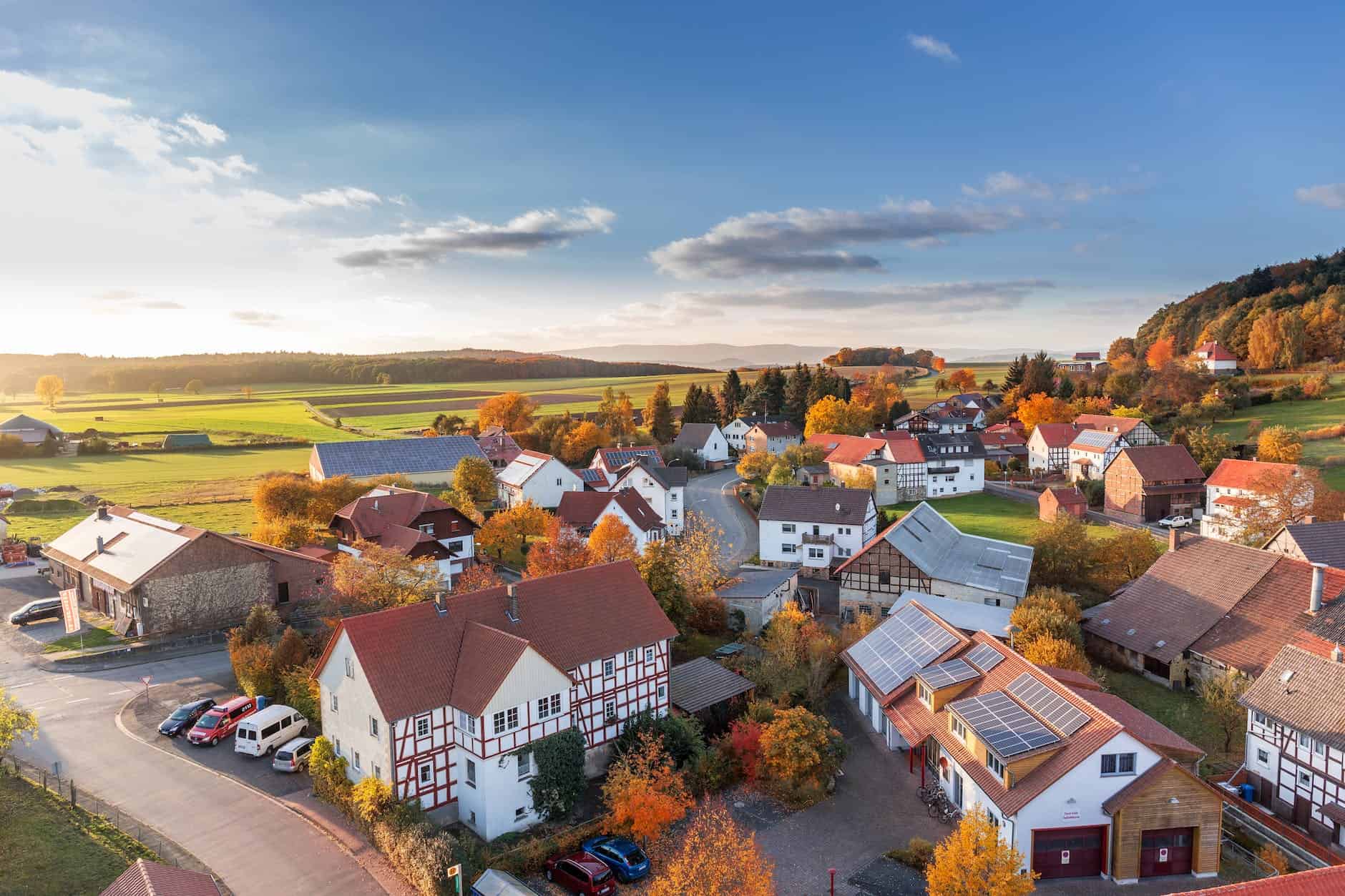Pedal
Electro Harmonix – Triangle Big Muff – Audio Demo
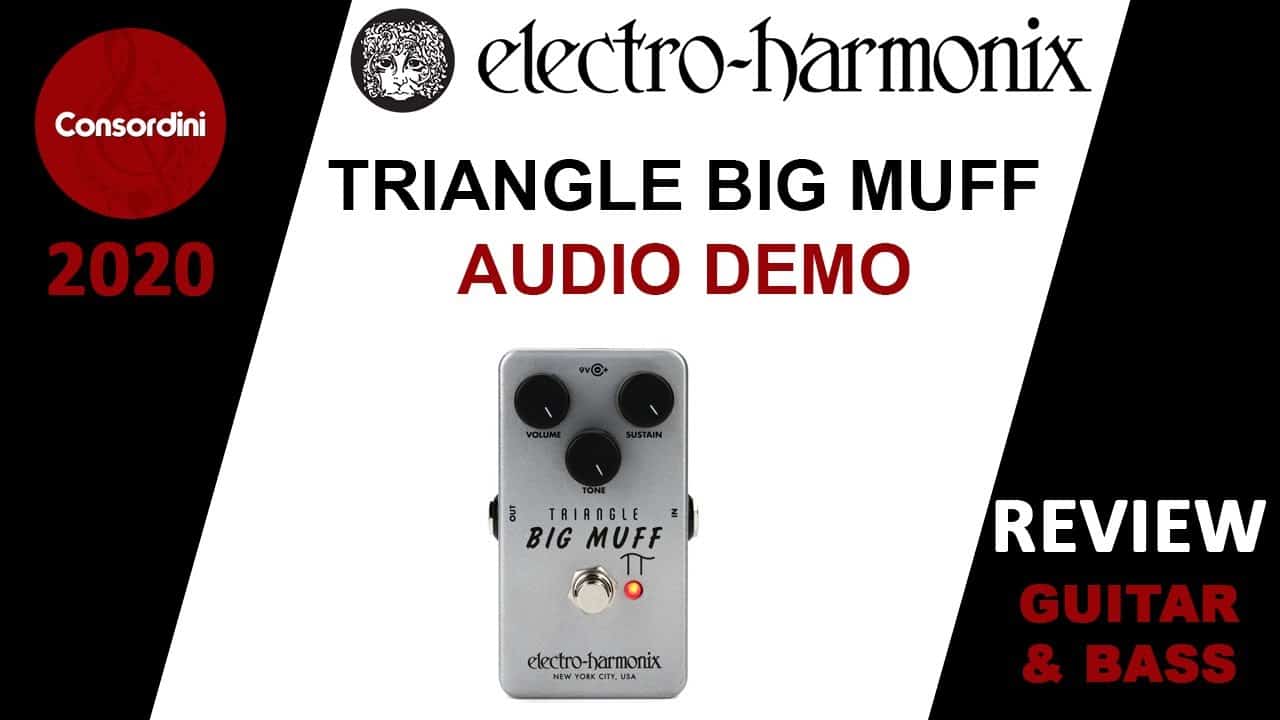
Electro Harmonix has reissued the original Version 1 Big Muff and it’s dripping with vintage Electro-Harmonix DNA and tone. Dubbed the Triangle Big Muff because of the layout of its Volume, Sustain and Tone controls, this is the one that started it all. The new Triangle Big Muff is a faithful re-creation of the original circa 1969 circuit now housed in a pedalboard-friendly, die-cast chassis.
Quick Specs
- The authentic V1 Triangle Big Muff reissued in a nano-sized chassis
- Effect status LED
- True bypass
- Vintage look and graphics
- 9V battery included, also accepts optional EHX 9.6VDC-200mA power supply
- Current Draw: 2.2mA @ 9VDC
- Dimensions in inches: 2.75(w) x 4.5(l) x 2.1(h)
- Dimensions in mm: 70(w) x 115(l) x 54(h)

Pedal
Microcosm Hologram Electronics

Microcosm is an incredibly versatile machine that can create striking ambient effects to tight, tap-tempo synchronized rhythms. By utilizing granular sampling, delay, and looping techniques, Microcosm can take your sound and completely transform it into something new and exciting. This machine can do everything if you want to create cascading micro-loops, diffused drones, or hypnotic textures. So if you’re looking for a powerful tool to unleash your creative potential, then Microcosm is worth considering!
What is Microcosm Hologram Electronics?
Microcosm is a pedal! It’s a looper, granular sampler, delay, reverb, pitch modulator, filter, and more all in one pedal. What is a Microcosm? This pedal is a microcosm of all the possibilities that sound effect technology offers. It’s a machine for experimentation, cutting up your signal into granular pieces and tweaking and stretching them into unique micro-loops.
You can use it to build up sequences and sounds that are truly unique and wondrous. So, if you’re into pedal pedals and want to explore the possibilities that hologram technology offers, make sure to add the Microcosm to your pedalboard!
What Are the Benefits of the Microcosm Hologram Electronics?
Using a granular processor has many benefits like the Eleven effects echo pedal. Primarily, it enables you to reinterpret and reform your sound into something sounding more magical. Additionally, this pedal has plenty of potential as a songwriting tool – giving you the ability to slice, stretch, rearrange and manipulate audio in ways never before possible. Combine all these fantastic features with 11 groundbreaking effects (with 44 preset variations), and you have an incredible instrument that can help produce some truly stunning results.
How does Microcosm Hologram Electronics work?
Microcosm is a music composition software that allows you to create and manipulate sounds uniquely. It uses micro loops, granular sampling, delay, pitch modulation, reverb effects, and more to create complex compositions. You can also use the “Hold” Sampler section to record notes or chords and tweak their sound further using Microcosm’s built-in Pitch Modulation feature.
Features of Microcosm
Microcosm hologram electronics is a unique type of audio that offers a variety of features that can be used to create unique audio experiences. MICRO LOOP allows you to repeat short pieces of your playing to create new phrases and movements. GRANULES will enable you to use sound fragments to create giant atmospheres and subtle textural effects. GLITCH allows you to real-time rearrange incoming audio to play at random or controlled intervals. MULTIDELAY allows you to delay a line with a selectable number of taps to create a wide variety of rhythmic and textural effects. Whether you’re looking for something to add a bit of mystery to your audio reels or want to create giant soundscapes, microcosm hologram electronics is the perfect solution!
How Did Microcosm Achieve Its Unique Technology?
Microcosm is an innovative effects pedal that reinterprets the sound delivered straight to it using sampling, pitch-shifting, delay, and looping techniques.
Applications of Microcosm
Hologram Electronics Microcosm is a microcosm that produces sound drones and atmospheres. It is also excellent for shaping sound, making it an essential tool in audio design and recording technologies. Its unique properties make it ideal for creating immersive audio experiences, both internally (for listening) and externally (for gaming or virtual reality).
How to Use Hologram Electronics Microcosm Pedal
To use the hologram electronics microcosm pedal, locate it on your pedal board and plug it in. Click on the app icon to open the microcosm pedal’s settings. Within these settings, adjust the volume and tone of your guitar according to your preference. Additionally, adjusting the decay time setting can change how long each note will stay lit after being played. when you’re finished configuring everything, hit “start” to begin playing!
A New Effects Toolkit for Adventurous Musicians
Music is an art form that everyone can enjoy. And with the advent of microcosm hologram electronics, it has become even more accessible to musicians of all levels. Microcosm holograms are a new effects toolkit that provides an all-new way to create unique, realistic sounds and visuals onstage. They can add depth and dimension to your music performances, making them more engaging and captivating for your fans. So whether you’re a beginner looking to explore your musical potential or an experienced musician looking for new ways to impress your fans, microcosm hologram electronics are a valuable addition to your effects arsenal.
Holographic Echo – a New Effects Processor for Musicians
Holographic Echo is a new effects processor that allows you to create amazing holographic soundscapes. Its easy-to-use interface makes it perfect for musicians who want to add an extra dimension to their music or experiment with different sounds. With its intuitive controls, you can tweak the settings and get stunning results in no time at all.
What other creative uses can you think of?
There are many different and creative ways in which you can use Microcosm Hologram Electronics. Whether you are looking for an effects toolkit that is versatile and innovative or want to explore multimedia projects, this electronics brand has something for you. Microcosm hologram electronics are perfect for musicians who wish to add a new dimension of creativity to their performances. It allows them to create unique effects such as lighting, sound, and more- and it also allows them freedom of expression!
How a Hologram Can Help You Onstage
When it comes to live performance, nothing beats the excitement of being able to touch and feel your music. The sonic possibilities of microcosm hologram pedals are endless.
Conclusion
After extensive research and testing, the microcosm hologram electronics pedal was the best pedal on the market. It has a high-performance sound and is tough enough to withstand heavy use. Highly recommend!
Pedal
What Are the Best Reverb Pedals for Guitar?

What are the best reverb pedals for guitar?
The right reverb pedal can make all the difference when it comes to guitar. It can help you create different sounds and effects, making your playing more interesting and varied. It can also help you to better emulate the sound of a real acoustic space, making your music sound more realistic. And, most importantly, it can improve the overall quality of your guitar playing sound.
Reverb pedals offer a range of benefits that can improve your guitar playing experience. Here are just a few of the reasons why they are so popular among musicians.

Versatility and Ease of Use
Reverb pedals are very versatile. They can be integrated into your guitar playing with little effort. And, since they come in a variety of shapes, sizes, and styles, there’s an option for every budget and taste. Plus, reverb pedals often work with other types of equipment such as amps and footswitches. So, it’s easy to use them in combination with other gear you already have or plan on getting in the future.
Affordability Versatility is one thing but affordability is another important factor when choosing which reverb pedal to buy. Fortunately, most devices offer great value for money and won’t break the bank. Some reverb pedals even offer several different effects at various price points so you can find a model that’s perfect for your needs and budget.
If you’re looking for an easy way to improve your guitar playing skills, a good reverb pedal is a great option. In fact, many guitarists consider it essential equipment ease of use is another important consideration.
Fortunately, most reverb pedals are easy to set up and use, so you can quickly integrate them into your playing with little effort. And, since they come in a variety of shapes, sizes, and styles, there’s an option for every budget and taste. Plus, most reverb pedals work with other types of gear such as amps and footswitches. So it’s easy to use them in combination with other units you already have or plan on getting in the future.
Value for Money
Fortunately, most devices offer great value for money and won’t break the bank. Some reverb pedals even offer several different effects at various price points so you can find a model that’s perfect for your needs and budget.
So there are plenty of reasons why getting one would be a good idea no matter whether you’re an experienced guitarist or new to playing. If you’re looking for an easy way to improve your guitar playing skills, a good reverb pedal is a great option.
In fact, many guitarists consider it essential equipment. Fortunately, most devices offer great value for money and won’t break the bank. Some reverb pedals even offer several different effects at various price points so you can find a model that’s perfect for your needs and budget.
So there are plenty of reasons why getting one would be a good idea no matter whether you’re an experienced guitarist or new to playing. This list should give you some idea of what’s available.
Here’s our pick of the five best reverb pedals currently available. We based this list on several factors including personal experience, expert reviews, and customer feedback. Hopefully, there’s something here to meet every guitarist’s needs and budget.
Strymon: Blue Sky
Experience the stunning power of Strymon’s Blue Sky reverbs. These lush, majestic reverbs will add an insane depth of character to your tone, whether you’re playing in a small room or a massive arena. With Tone of Voice, you’ll be able to dial in the perfect reverb for any situation, ensuring that your music always sounds its best.
Strymon NIGHTSKY Time-Warped Reverberator
Looking to add some ethereal, otherworldly vibes to your sound? Look no further than the NIGHTSKY pedal from Strymon. This powerful time-warped reverberator gives you three selectable reverb types, each with its own unique sonic character, as well as adjustable EQ so you can fine-tune the reverberation to your exact specifications. With its shimmering harmonics and expansive reflections, the NIGHTSKY is perfect for adding a touch of magic to any musical creation.
Again, it’s a Strymon. Practically perfect in every way.
Reverb pedals give you access to an entire world of sounds, styles and techniques. And, since there are so many different types – room, hall, plate and digital reverb being just four examples – you have the potential to try out tons of different effects. With all these options at your fingertips, experimenting with reverb is easy and stress-free. Affordable
You can find great reverb pedals for any budget. As long as you’re willing to do some research before buying, you should be able to find one that fits within your price range quite easily. Convenience
Reverb pedals are easy to use and can be integrated into your current guitar rig easily. And, they’re small enough to be carried around if you need to take one on the road. So you can add them into your playing whenever and wherever you like. Value
Many reverb pedals offer several different types of effects in one package, so this is an excellent way to get a lot of different sounds for your money.
Performance
Reverb pedals really don’t put any restrictions on you as a guitarist, so the creative possibilities are endless. Whether you just want to add some extra atmosphere or explore more experimental techniques, there’s something for everyone. Design
Most reverb pedals come in sturdy metal cases that should take just about anything you can throw at it. This is important because you want something that’ll stand the test of time.
Before we go any further, let’s take a quick look at some key terms that frequently come up in this area…
Here are five other posts that should be useful for anybody looking to buy a reverb pedal:
You might also find these two posts helpful:
Here are our top five tips for getting the most out of your reverb pedal…
- Tip #1 – Experiment with different settings to see what’s available. You can do this on any model, but it’s even more fun if you have a large selection of options at your disposal. So some pedals – like the Strymon Big Sky, for example – are great.
- Tip #2 – Set your reverb pedal before you start playing, rather than rely on leaving it on throughout the entire song or performance. This is important because there’s a chance that changing settings can throw things out of balance and ruin your tone. If you do want to switch effects during a song, you can always go back to your reverb at the end.
- Tip #3 – Experiment with different pedals. Just because you’ve got one device doesn’t mean it has to be the only thing on your pedalboard. You might find that it’s more fun and interesting if you mix things up a bit by adding in some other options.
- Tip #4 – Take your time. Reverb pedals can add a whole new level of depth and expression to your music, so there’s no need to rush when you’re making a purchase. In fact, some musicians even recommend taking a few weeks or months to really get familiar with the various types of reverb on offer, so you can find the right sound for you.
- Tip #5 – The best way to get good results is to try out as many different pedals as possible, so you can see what’s available on the market. If there are several reverb pedals that are popular with musicians, this is usually a good indicator of quality. For example, if Strymon are making several models, that should tell you something about their quality. Just remember to stay within your budget at all times!
At this stage, we’re going to share our top five guitar reverb pedals…
Top 5 Guitar Reverb Pedals: Our Choices
HardWare
What You Need to Know About Reverb for Guitar
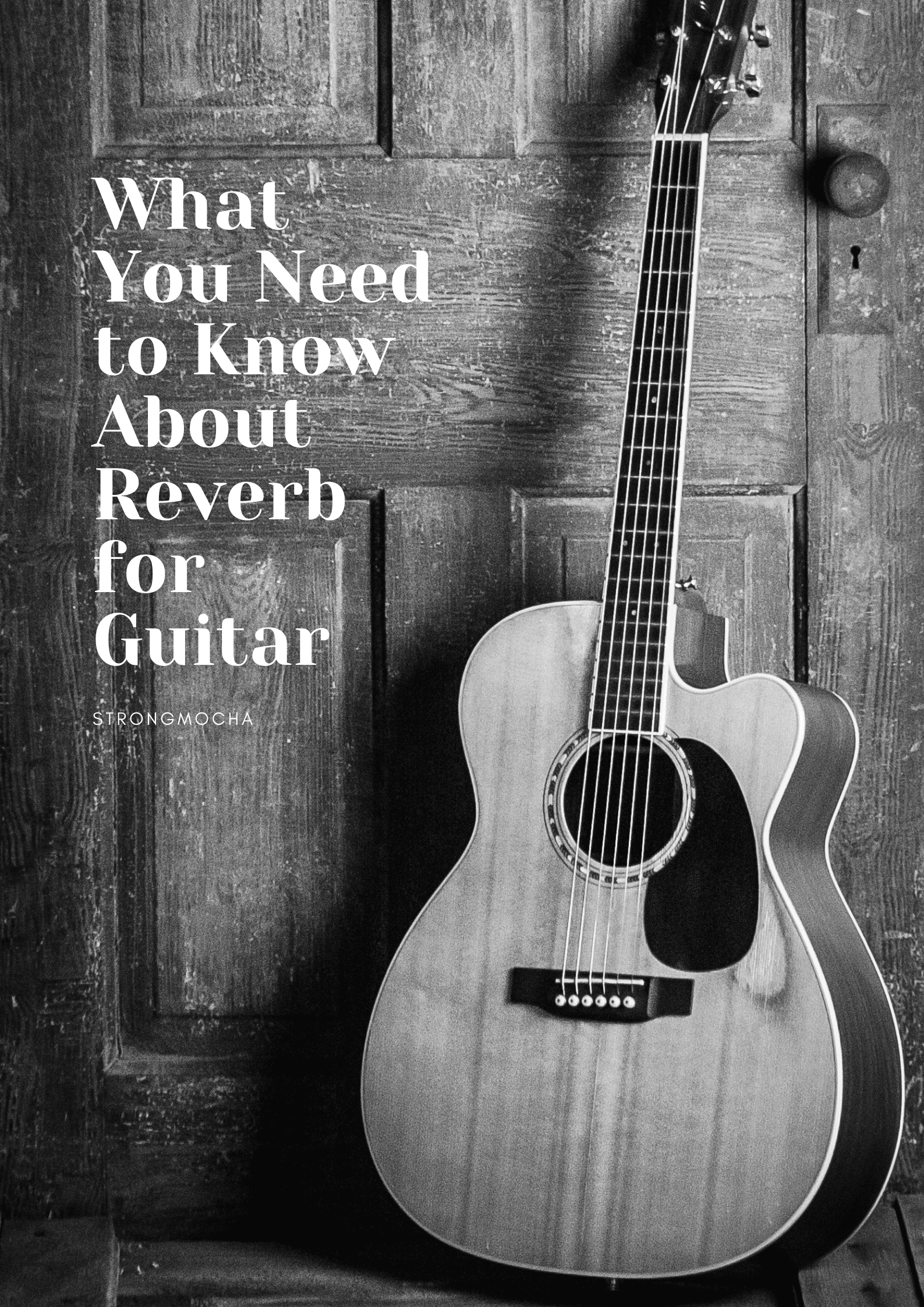
What You Need to Know About Reverb for Guitar
Your favorite band is playing your favorite song, and you’re really getting into it. You start air-guitaring along and then…BAM! You hit a wrong note and everyone stares. You quickly realize that you’re not quite as good at guitar as you thought.
Maybe it’s time to learn about reverb for guitar. This article will talk about the Reverb Guitar Effects Pedal
The Reverb Guitar Effects Pedal is a digital pedal that has been designed to be used for electric guitars. It has a lot of great features and it is a very good option if you are looking for ways to make your guitar sound better.

Introduction: What is Reverb?
Reverb is a type of natural sound effect produced when you play an instrument in any place with an acoustically responsive hard surface. In this case, the space that works as a secondary source will be used to shape and enhance the original sounds.
Technological advancements have brought us digital effects which can create Reverb noise. These are also known as reverberators or simply reverb effects.
These types of pedals can recreate different ambient spaces in the form of audio signals which you can hear in your guitar amplifier.

What is a Reverb Guitar Effects Pedal?
You are playing guitar and you hit the wrong note. You feel embarrassed because you aren’t that good at playing guitar. Maybe you should learn about the Reverb Guitar Effects Pedal!
This article will talk about what reverb is, how it can make your guitar sound better, and why someone might want to understand what a reverb pedal is.
A Reverb Guitar Effects Pedal is something that has been designed to be used for electric guitars. It has lots of cool features and if you are looking for ways to make your guitar sound better, this might be the best option for you!
Reverb can also just mean when someone plays an instrument in any place with an acoustically responsive hard surface like a cave, cathedral, stadium, and so on. In this case, the space that works as a secondary source will be used to shape and enhance the original sounds.
The sound of the instrument echoes back after hitting hard surfaces like walls or ceilings in these types of spaces. Sometimes you can even hear such reflected sounds without such hard surfaces existing around you (like an echo).
Technological advancements have brought us digital effects which can create Reverb noise. These are also known as reverberators or simply reverb effects. These types of pedals can recreate different ambient spaces in the form of audio signals which you can hear in your guitar amplifier.
When Playing an Instrument, What Is Reverb?
Did you know that there is a type of sound effect called reverberation? Reverberations are also known as reverb effects, and they can be used to make your guitar amplifier sound better.
Technology has brought us digital effects which are sometimes referred to as “Reverb” pedals. These types of pedals can create different kinds of ambient spaces in the form of audio signals which you can hear in your guitar amplifier.
The Reverbs Created by the Reverb Guitar Effects Pedal
The Reverb Guitar Effects Pedal is a digital pedal that has been designed to be used for electric guitars. It has a lot of great features and it is a very good option if you are looking for ways to make your guitar sound better.
Today we have digital effects which can create reverberation noise. These are also known as reverbs and they can be used in a guitar amplifier to produce different types of ambient spaces that you might hear when playing an instrument.
When playing an instrument, reverb is created when sound waves bounce back off hard surfaces like walls or ceilings in acoustic spaces such as cathedrals, caves, stadiums etc. Sometimes you may even experience this effect without such hard surfaces existing around you (like an echo).
Technological advancements have brought us digital effects which can create Reverb noise. These are also known as reverberators or simply reverb effects. These types of pedals can recreate different ambient spaces in the form of audio signals which you can hear in your guitar amplifier.
If you play an instrument, reverb is the sound effect that is created when the original sounds bounce back off hard surfaces like walls or ceilings that exist in acoustic spaces such as caves, cathedrals, stadiums etc. Sometimes you may experience this effect without these surfaces being around you (echo).
Digital effects have been introduced which are sometimes referred to as “Reverb” pedals. These types of pedals can recreate different kinds of ambient spaces in the form of audio signals which will be audible in your guitar amplifier.
How Does a Reverb Pedal Work?
Maybe you’re at a friend’s house and they have an electric guitar. You’ve always wanted to learn how to play, so you pick it up and start messing around. You’re having a lot of fun until you hit a wrong note and everyone stares. You quickly realize that you’re not quite as good at guitar as you thought. Maybe it’s time to learn about reverb for guitar.
Reverb is a type of natural sound effect produced when you play an instrument in any place with an acoustically responsive hard surface. In this case, the space that works as a secondary source will be used to shape and enhance the original sounds.
Technological advancements have brought us digital effects which can create Reverb noise. These are also known as reverberators or simply reverb effects. These types of pedals can recreate different ambient spaces in the form of audio signals which you can hear in your guitar amplifier.

The different types of reverb pedals
When looking for ways to make your guitar sound better, it’s important to understand the different types of reverb pedals available. Each one offers a unique set of features that can enhance your playing experience.
The three most common types of reverb pedals are plate, spring, and hall. Each one offers a different sound and can be used to create different effects. For example, a hall reverb pedal can be used to create the illusion of a large acoustic space, while a plate reverb pedal can be used to create a more metallic sound.
Knowing the difference between these pedals can help you choose the right one for your needs. If you’re not sure which pedal is right for you, consult with a guitar instructor or music store employee.
Plate
The plate reverb type simulates the reverberation that occurs in a room with hard surfaces like concrete or tiles. Most delay effects are based on an emulation of this kind of environment. It is most commonly used for country music, but is also frequently used for rock music.
Spring
The spring reverb type simulates the reverberation that occurs when a guitar’s strings vibrate against the pickups. While this traditionally took place in a metal spring-like those found in a large ashtray, it can also take place in an electronic device such as a guitar pedal.
When done electronically it has often been called “vibrato” instead of “reverb” and is somewhat controversial among purists who claim that using electronics to achieve this sound produces something other than natural reverb. However, some well-known users of the effect – including Eddie Van Halen – swear by this method for achieving its unique tone.
Because springs naturally produce their own vibrations and sounds, they are also sometimes used to create unusual sounds (such as the “wobbling” effect in The Beatles’ “I’m Only Sleeping). Because this type of reverb is an emulation of something physical, rather than electronic, it can be said to sound more natural.
Hall
A hall reverb type simulates the reverberation produced in a concert hall or other large space with reflective surfaces like marble walls. This kind of environment gives instruments a very rich and full sound.
Even though many effects units claim to emulate real spaces, most emulations tend to be based on previous digital simulations rather than actual physical spaces. For that reason, they often have trouble creating convincing simulations of halls without sounding too “metallic”.

How to use a reverb pedal in your guitar playing
Reverb pedals are an important tool for any guitarist. They can be used to create different effects and sounds, making your guitar playing sound better.
If you’re not sure how to use a reverb pedal, consult with a guitar instructor or music store employee. They can help you choose the right pedal for your needs and show you how to use it properly.
With a reverb pedal, you can experiment with different sounds and find the ones that work best for you. With a little practice, you’ll be able to create the perfect sound for any song or style of music.
The benefits of using a reverb pedal in your guitar playing
Reverb pedals offer a range of benefits that can improve your guitar playing experience. Here are a few of the most important benefits:
- They can create different sounds and effects, making your guitar playing more interesting and varied.
- They can help you to better emulate the sound of a real acoustic space, making your music sound more realistic.
- They can improve the overall quality of your guitar playing sound.
- They are easy to use and can be integrated into your playing with little effort.
- They are affordable and widely available, making them a great option for any guitarist.
What are the best reverb pedals for guitar?
The right reverb pedal can make all the difference when it comes to guitar. It can help you to create different sounds and effects, making you are playing more interesting and varied. It can also help you to better emulate the sound of a real acoustic space, making your music sound more realistic. And, most importantly, it can improve the overall quality of your guitar playing sound.
Fortunately, reverb pedals are affordable and widely available. So, if you’re looking for an easy way to improve your guitar playing skills, a good reverb pedal is a great option. In fact, many guitarists consider it essential equipment.
So, what are the best reverb pedals for guitar? There’s no easy answer to that question because there are so many great options out there.
But, if you’re looking to find the best pedal for your needs and budget, here are a few things to consider:
Did you know?
Reverb pedals can be used to create different effects and sounds, making your guitar playing sound better. They are an important tool for any guitarist.
By using a reverb pedal in your guitar playing, you can experiment with different sounds and find the ones that work best for you. With a little practice, you’ll be able to create the perfect sound for any song or style of music.
Conclusion
Reverb for guitar can be used to create different sounds and effects, making your guitar playing more interesting and varied. It can also help you to better emulate the sound of a real acoustic space, making your music sound more realistic. And, most importantly, it can improve the overall quality of your guitar playing sound.
The right reverb pedal can make all the difference when it comes to guitar. It can help you to create different sounds and effects, making you’re playing more interesting and varied. It can also help you to better emulate the sound of a real acoustic space, making your music sound more realistic. And, most importantly, it can improve the overall quality of your guitar playing sound.
Fortunately, reverb pedals are affordable and widely available. So, if you’re looking for an easy way to improve your guitar playing skills, a good reverb pedal is a great option. In fact, many guitarists consider it essential equipment.
What You Need to Know About Reverb for Guitar FAQs
Do Reverb Pedals Distort the Sound of The Guitar?
A reverb pedal does not change or distort the original sound of your guitar. It simply enhances it, making it smoother and more pleasant to listen to.
What Is a Good Way to Test if My Reverb Sounds Right?
When it comes to music, there are no absolute rules regarding volume and tone settings. Different styles work best with different settings, so you’ll need to experiment until you find what works best for you. But there are a few general guidelines you can follow. In most cases, playing with more volume will lead to a better sound quality. And playing with less distortion will also improve the overall effect of the pedal.
What Is an Easy Way to Incorporate Reverb Into My Playing?
One of the easiest ways to incorporate reverb is simply to play your guitar like you normally would and make sure it sounds good. Then, experiment with adding some reverb and see how it works for different songs and genres. When you’re done experimenting, go ahead and disable the pedal. If some songs sound better with more or less reverb, try using those settings as a general rule moving forward.
Is It Possible to Overuse Reverb?
Yes, it is possible to overuse reverb. In some cases, a very strong reverb effect can actually sound worse than no reverb at all. If you’re not sure about how your music will sound with lots of different effects, try playing without them first and see what works best.
Do I Need a Separate Pedal for Each Type of Guitar Playing?
No, a single pedal can be used for many different types of music and playing styles. You can experiment with using the same level of reverb for slow songs as you would use on fast songs or heavy metal riffs. Generally speaking, less distortion will give you a better result when playing slower songs while adding more distortion will sound better for faster songs or heavier music.
What Is Theoretically the Best Reverb Setting?
Theoretically, the best reverb setting would be no reverb at all. But, in many cases, this won’t work and you’ll want to add some type of effect instead. In most cases, a moderate amount of reverb will give you the desired result. And if it doesn’t sound right on your guitar, try turning the level down and adding more distortion instead. If that doesn’t work either, experiment with using different settings until you get something that works for your playing style and genre of choice.
Do I Need to Use an Aux Cable?
In some situations using an aux cable can actually make a difference. But it’s not a requirement for using a reverb pedal. In most cases, you’ll be able to connect the pedals directly to your console or amp without needing an aux cable.
What Kind of Reverb Pedal Should I Get?
The kind of reverb pedal that you need will depend on your budget and the type of music you plan to play. If you’re playing heavy metal riffs, look for a pedal with more distortion settings. If you’re playing smooth jazz songs, look for one with plenty of softer settings instead. And if your budget is flexible, consider getting two pedals at once so that you don’t have to switch between them depending on what style you’re playing at any given time.
Do I Need to Have a Stereo Set-Up for Using Reverb?
No, you do not need to have a stereo set-up in order to use reverb. The sound will still come through clearly even if your console or amp is mono input. You can check out these great settings on how to make the most of your reverb pedal .
Can I Use Reverb with Different Instruments?
Yes, different instruments can benefit from using reverb as well. But you’ll need to experiment with the type of music and guitar playing styles that work best for each instrument until you find what works perfectly for both cases.
What Is This Mysterious < > Button on My Reverb Pedal?
The mysterious < > button on your reverb pedal is often called the “Dwell Control.” It controls how long your reverb will last before it fades away or cuts off. This function works well for fast songs, slow songs, and everything in between. Just make sure to experiment with this feature until you find a setting that sounds good for different types of music.
Is There the Easiest Way to Set Up My Reverb Pedal?
Yes, there are many ways to set up your reverb pedal depending on what type of sound you’re trying to create. If you’re playing heavy metal riffs, try turning the Distortion control all the way up. For smooth jazz tunes, keep all of the settings at their default level instead.
-

 Vetted2 months ago
Vetted2 months ago11 Best Gore Websites to Explore the Darker Side of the Internet
-
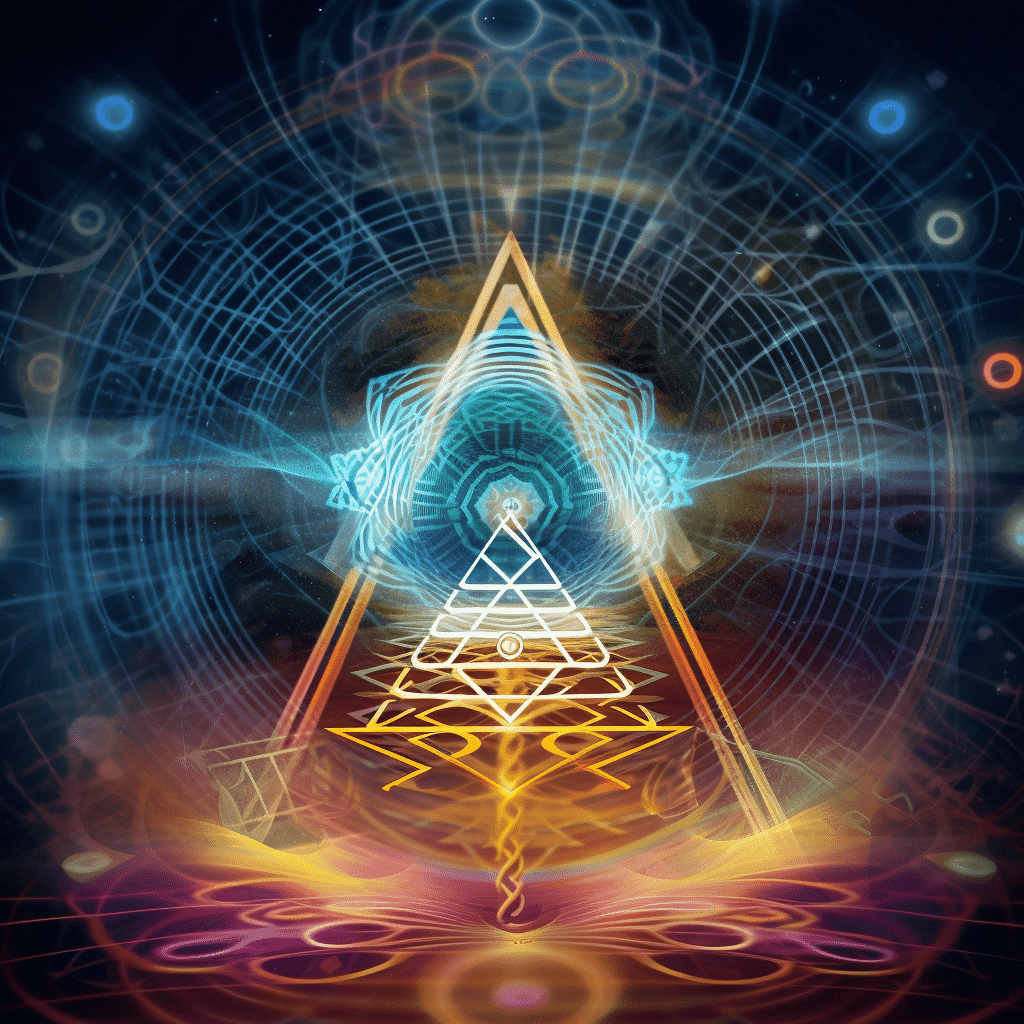
 Music Theory2 weeks ago
Music Theory2 weeks agoUnlocking Nature’s Harmony: The Power of 432 Hz Frequency in Sound & Music for Enhanced Living and Well-Being
-
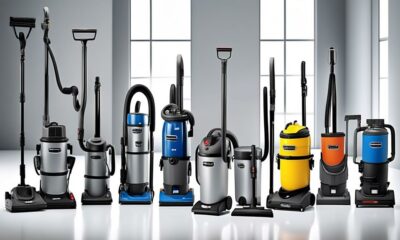
 Vetted1 month ago
Vetted1 month ago15 Best Commercial Vacuum Cleaners for Heavy-Duty Cleaning Jobs
-

 Vetted2 months ago
Vetted2 months ago15 Best Essential Oils Brands to Elevate Your Aromatherapy Experience
-
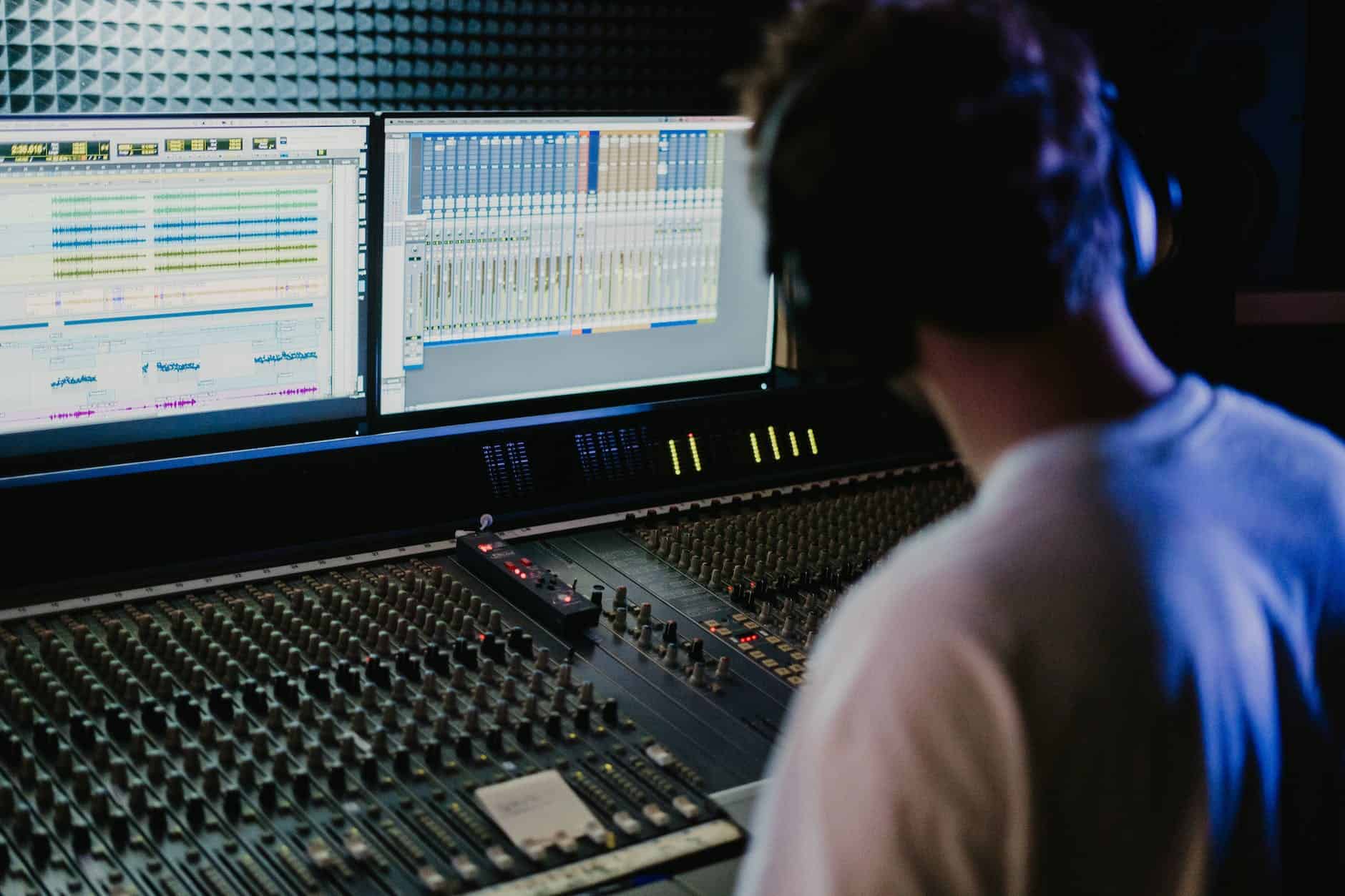
 Sound Design2 weeks ago
Sound Design2 weeks agoWhat Is the Difference Between a Sound Engineer and A Sound Designer?
-

 Native Instruments Kontakt2 weeks ago
Native Instruments Kontakt2 weeks agoVOCAL AI – Animated Intelligence: The Ultimate Vocal Playground
-
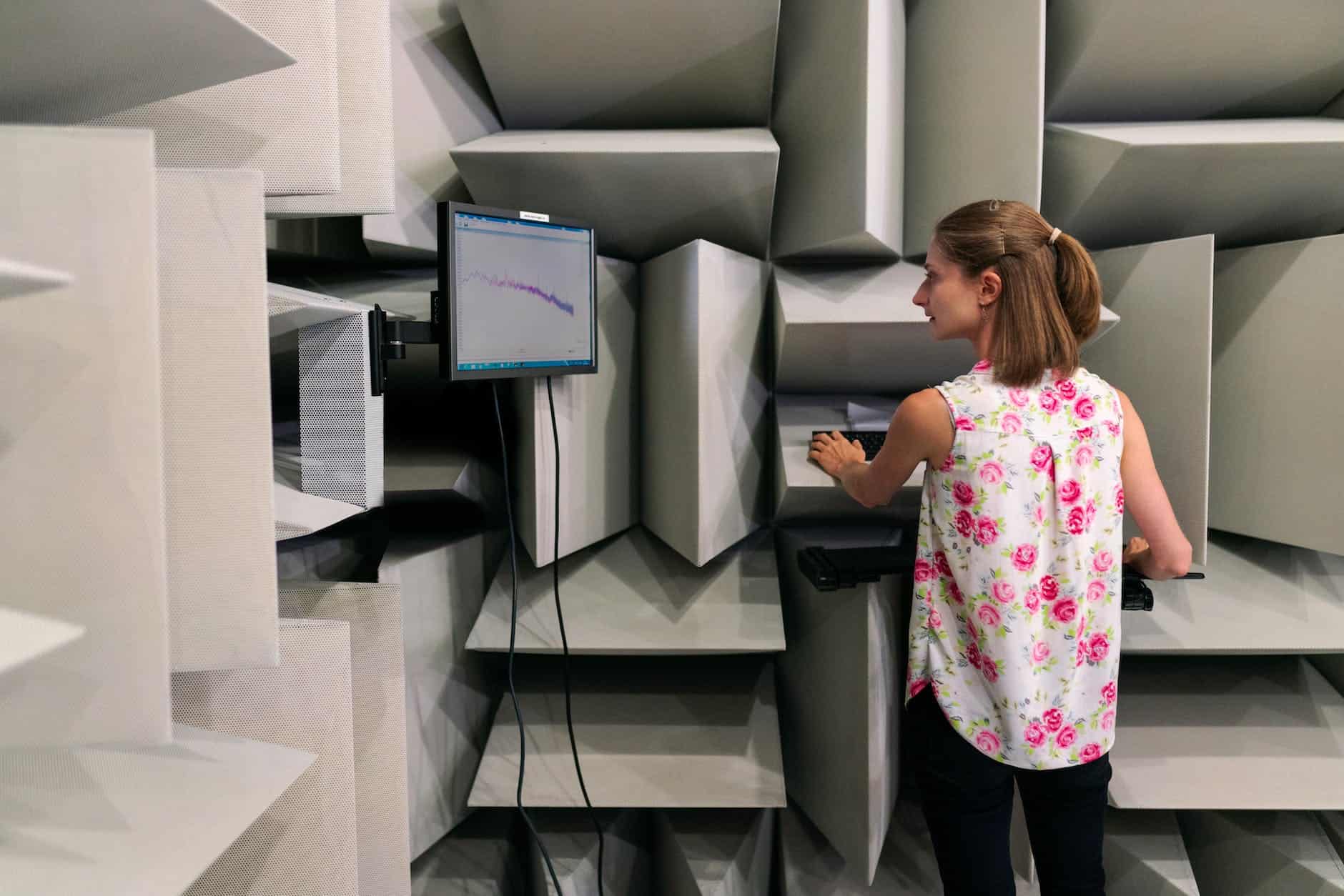
 Sound Design2 weeks ago
Sound Design2 weeks agoWhy Sound Engineer
-
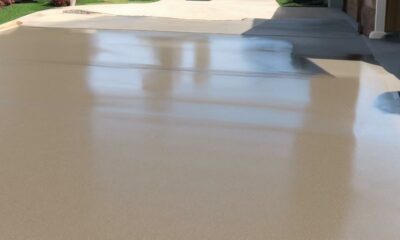
 Vetted2 months ago
Vetted2 months ago15 Best Concrete Sealers for Ultimate Protection and Longevity












